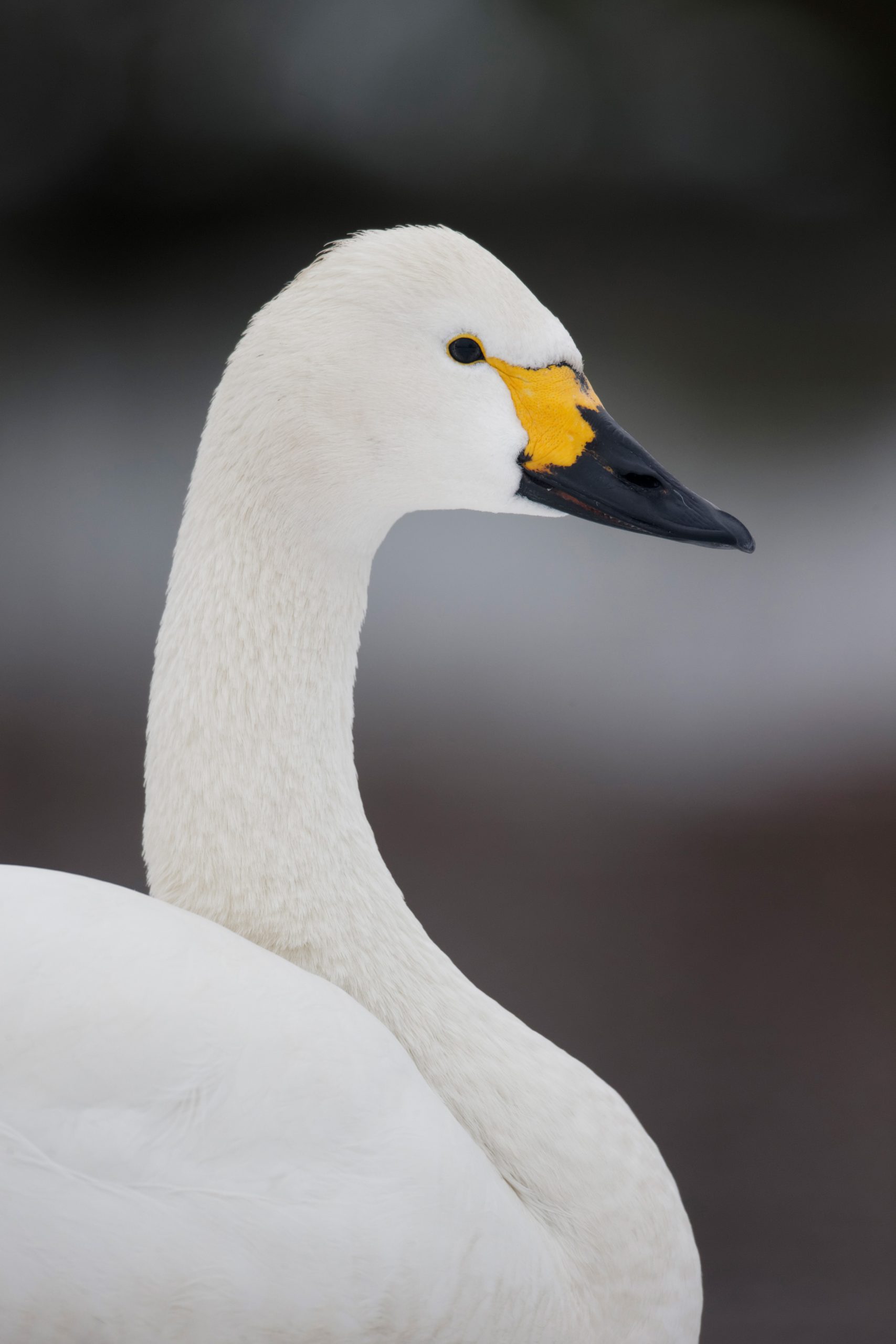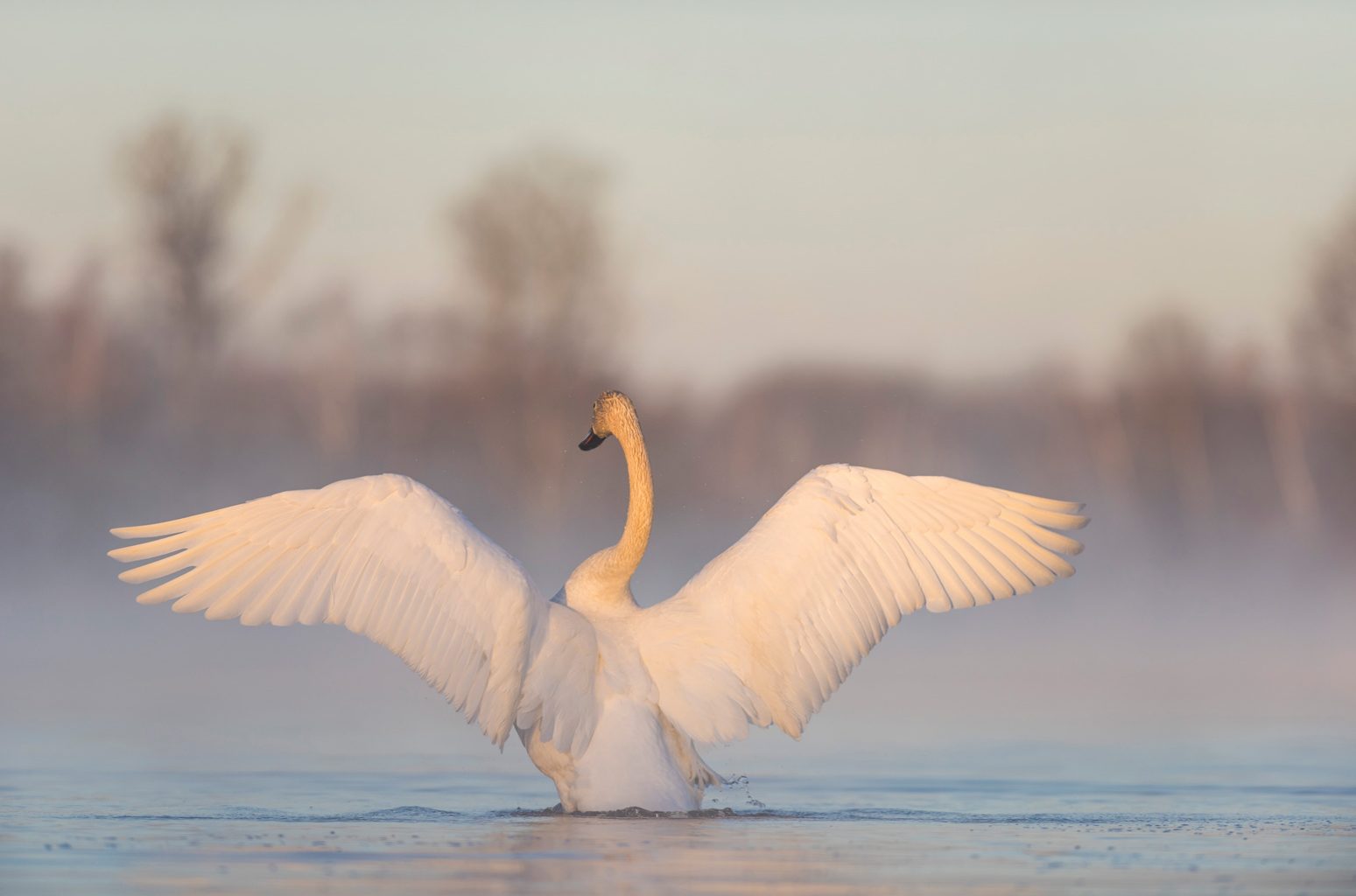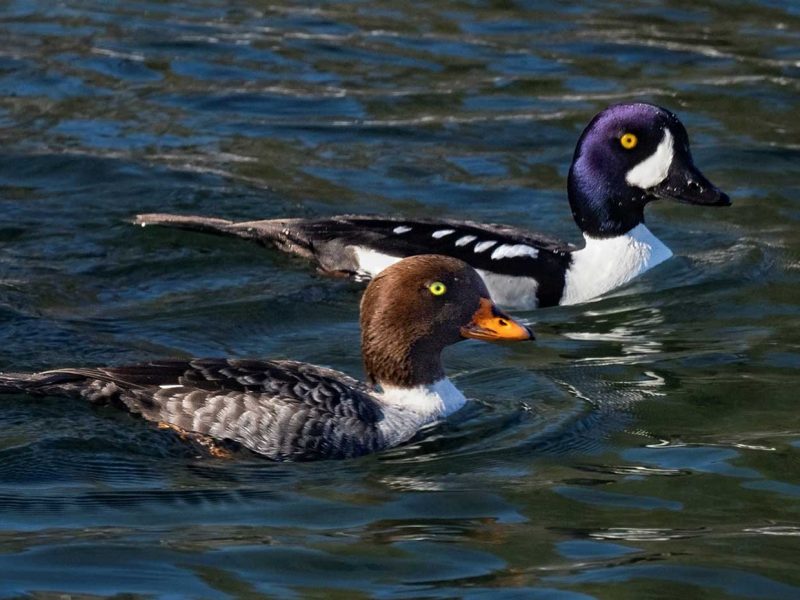They approach in a vee formation with their massive white wings outstretched, gliding in that large white body, their long acute triangular black bills bobbing ahead of an endless drooping white neck, looking like the invaders in Orson Well’s War of the Worlds. They are Tundra Swans returning. Seeing them is a signal that winter is loosening its grip, and a thaw is imminent. Here from late January into March in the Klamath Basin, they can be seen in shallow waters, or flooded, or sometimes just muddy fields, feeding on plant matter such as roots and tubers, or even invertebrates, found in the mud. If they are in deeper waters they can be seen dipping, with tails and black feet up, with their longs necks down, holding their breath for long periods of time scooping through the mud at the bottom. They stir up water and mud and American Wigeons, a duck, often swim close by getting easy meals themselves. It’s always amazing that an all white creature spending so much time in the mud, still is always white.
Gregarious and social, they talk in their spare time with heads thrown about used like arms to add expression. And when they are vocal, the jazz band is in town. Whistling Swans, as Tundra Swans were formerly called, are somewhat musical but random in their cadence. Out of the Whistling Swans’ racket, however, one can sometimes hear a Dizzy Gillespie bursting out some low notes. That means a Trumpeter Swan must be present. Rare for this area, the Trumpeter Swan I s a nearly identical looking swan, only larger with no yellow flecks on their bills. They have been increasing in recent years. Hopefully their status will rise above rare and become more common.

Swans are a hardy animal, enduring the harshest of elements, with lingering winter weather here. Once, while driving through the Straits Drain Units of the Lower Klamath Wildlife Refuge, through blinding sideways snow, hundreds of moguls in flat field were Tundra Swans with heads tucked completely covered with snow during a blizzard. Come March, Tundra Swans will leave, eventually nesting in the Arctic Circle at the northern part of North America. Trumpeter Swans leave for interior Alaska, or northern states with large rivers and lakes. A few have summered, and nested, at Summer Lake Wildlife Area over in Lake County, Oregon.
Their clean beauty and majestic character has inspired symphonies and children’s novels. And they bring beauty to the Klamath Basin each spring.
Written by Kevin Spencer
Kevin Spencer has conducted point count bird surveys for almost 20 years and was involved in the creation of species accounts for the book “Birds of Oregon: A General Reference.” He has seen or heard 314 different species in the Klamath Basin.




